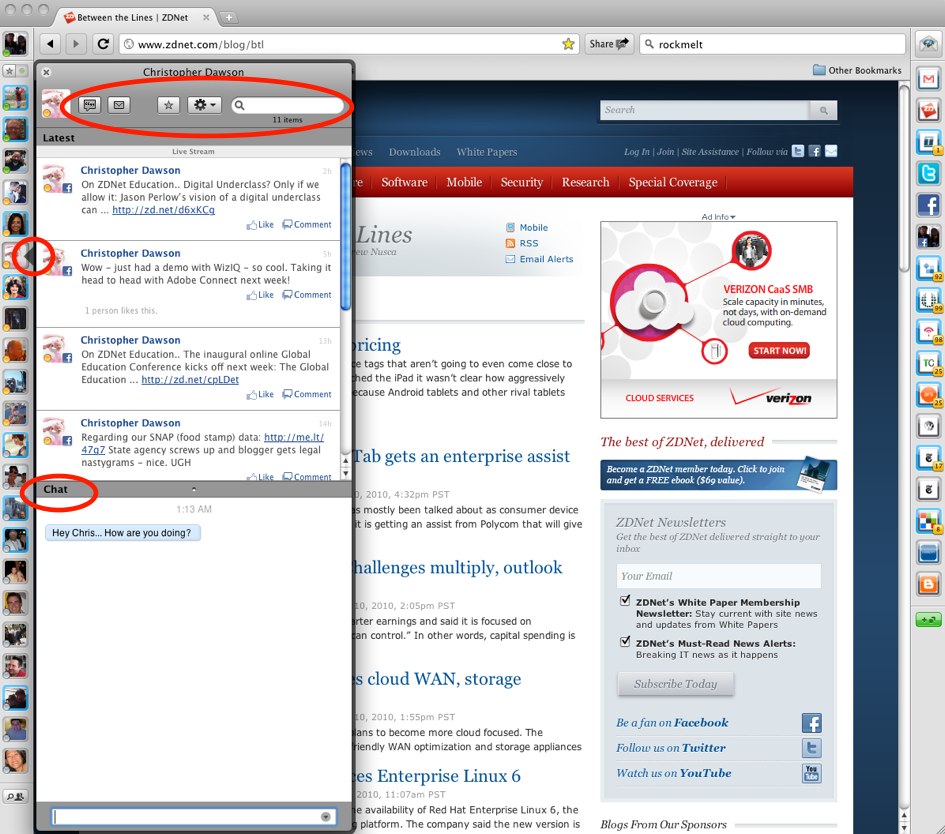What happens when a browser turns Facebook into Feedbook?

The new RockMelt browser has been getting a lot of attention this week, showcasing how your social world can be wrapped into the browser itself, instead of just in a browser window. For the past few days, I've been reading status updates, posting links, and chatting with friends on Facebook without having to visit facebook.com, the site itself.
That means I also haven't been seeing any of the ads on Facebook. I also haven't been checking out of the site pages sponsored by advertisers - not that I make a habit of going those Facebook pages regularly, anyway. Still, brands are making a point of building their Facebook presence in hopes of interacting and engaging with the more than 500 million people on the site. 
When something like RockMelt comes in and turns Facebook into something more like Feedbook - offering users the news feed and the ability to post, browse and interact among their network of friends - it puts at risk the number of people who visit the site, as well as the frequency of their visits and the amount of time they spend on the site during that visit.
Look at what RockMelt is also doing to Google search results. The pop-up window that comes from a query within the RockMelt search box has links to the top results - but no text ads.
None of this is to imply that RockMelt is even having an impact on Google searches or Facebook browsing - after all, the browser's invitation-only beta just went live this week. But others are also tapping into the feeds to bring a stream of information from a number of sources, including Facebook, to places outside of the browser. Flock, also billed as a social media browser, is out there. Yoono, which aggregates streams into browser add-ons or standalone widgets, is another example.
But Alan Wolk, managing director of social strategy for KickApps, a social publishing platform, says this trend could leave money-spending companies out of the equation. Brands, he said, can't realistically expect to build an audience within Facebook - and why would they want to? The customer data that's most valuable belongs to Facebook, not the advertiser. And the look and feel for those brand pages are rigid, in that they are built in Facebook's platform.
The goal of a social media strategy for any company should be to get those people to click out of Facebook and into their own sites, he said. But how can they do that if those potential customers never even see the Facebook page?
Clearly, we're getting ahead of ourselves on the impact of social browsers and other feed-providing services. But consider what could happen if the trend continues - and given that companies are already lighting up this space, I can't imagine things will slow down.
This week, data from comScore showed that 24 percent of all online display ads in the U.S. in September appeared on Facebook - more than twice as many as any other publisher, according to a Wall Street Journal report. In that report, Facebook Chief Operating Officer Sheryl Sandberg referred to the growth in its ad business as "steep" and "really healthy."
If Facebook, the platform, keeps giving users alternate ways to access the streams and feeds outside of Facebook, the site, then how long can the growth in that ad business realistically continue?
Other coverage: